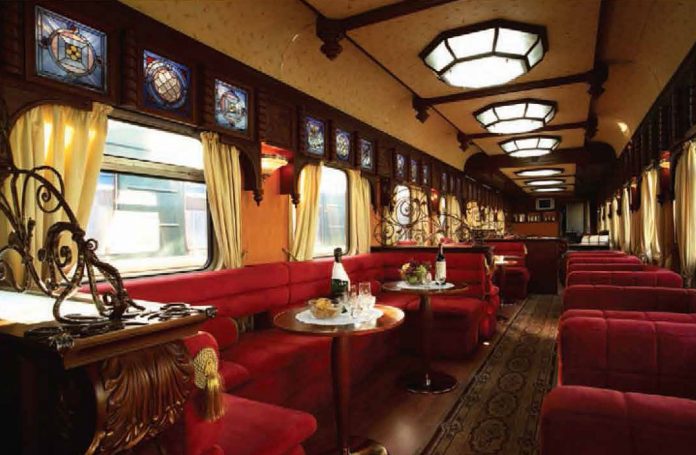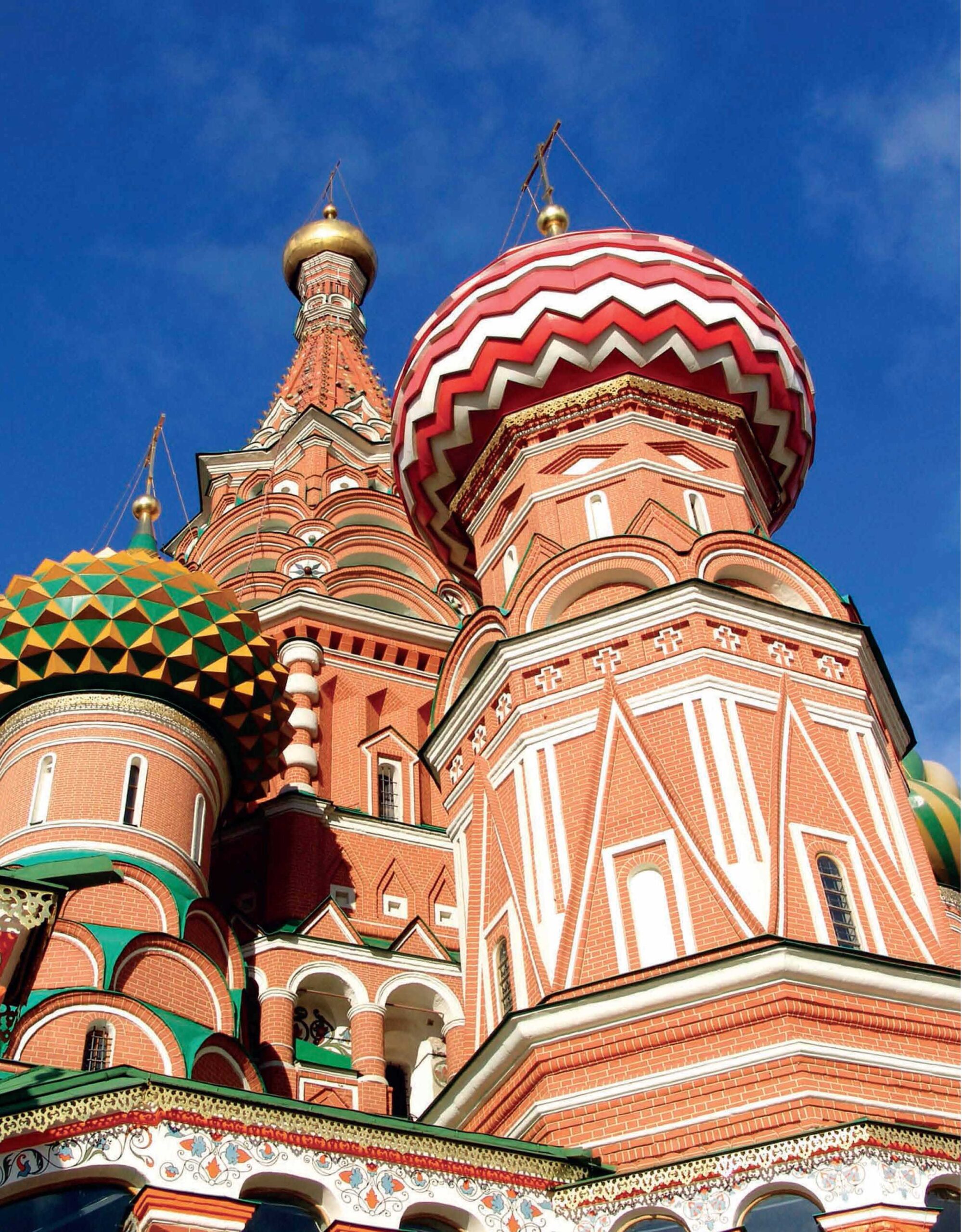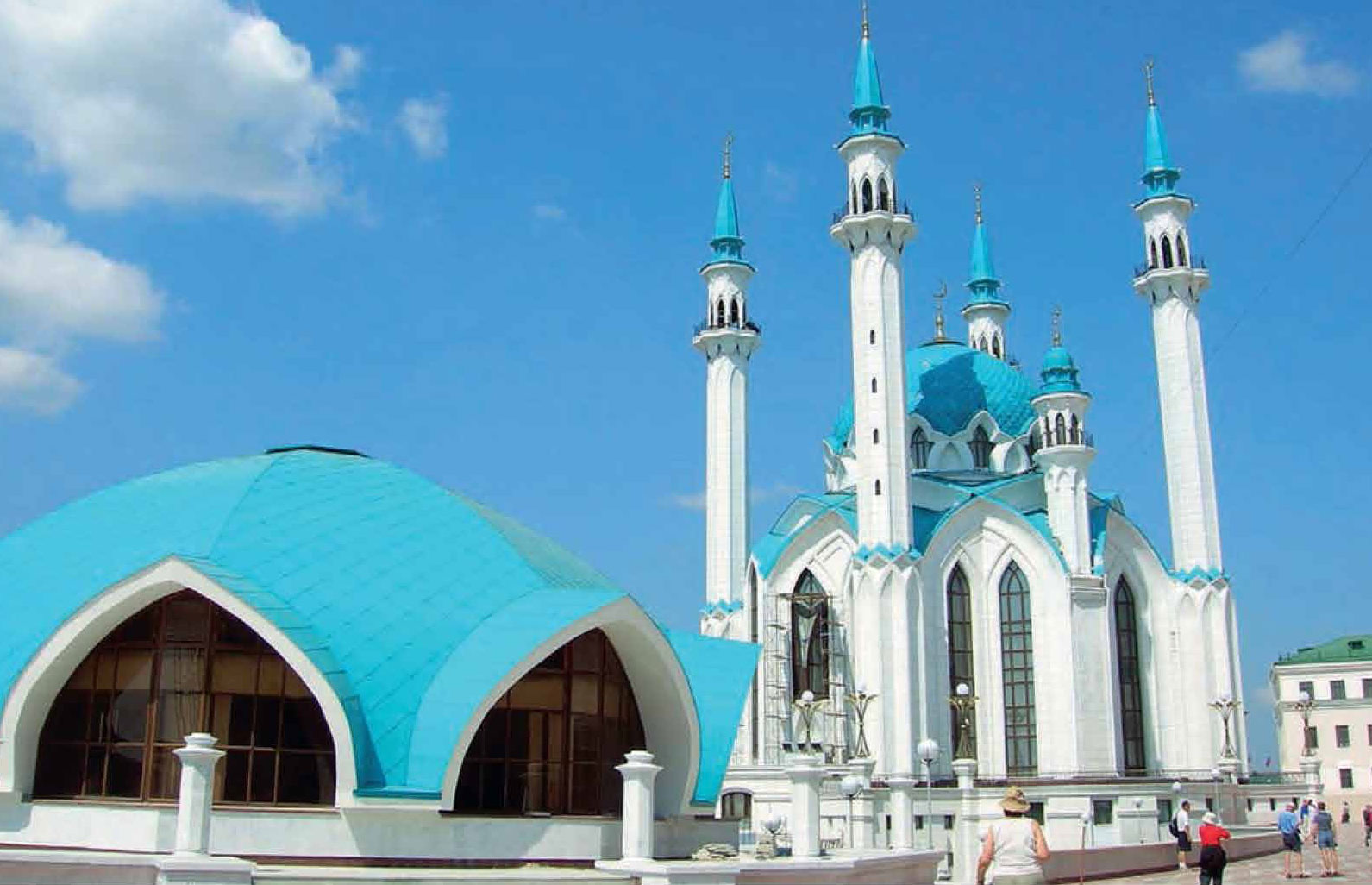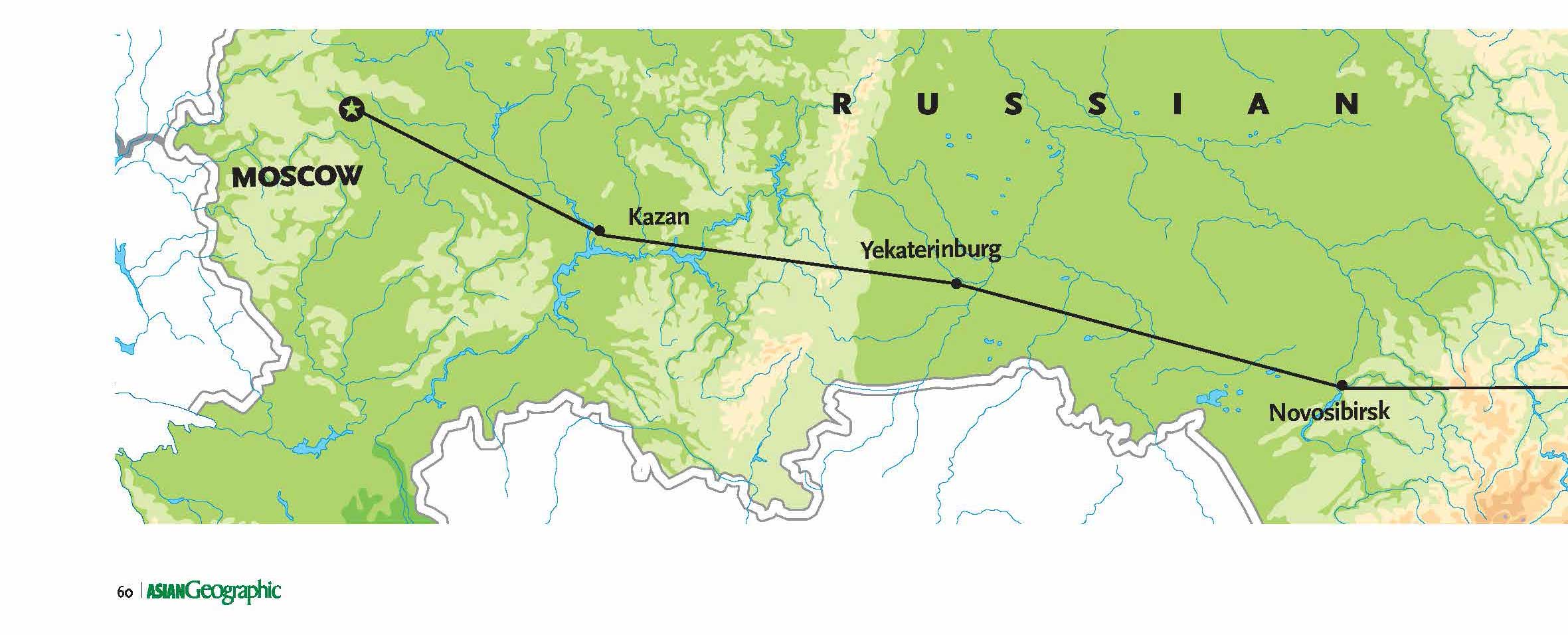
(Text by Simon Richmond. Photos courtesy of GW Travel)
The blue and gold painted Golden Eagle is waiting on platform 8 of Moscow’s Kazan station, its destination listed as Ulaanbaatar, even though the final stop is Vladivostok. There’s no time to unpack my luggage, which has already been delivered to my sleeping cabin, as immediately after the punctual 1.30pm departure, luncheon aboard this luxury Trans-Siberian train is to be served. In the ornately decorated dining car, waiters present the first course of tomato salad and pour wine as the Golden Eagle gently rocks through Moscow’s ragged suburbs. Tour manager Anna welcomes us all aboard and promises that the chefs will “try to present Russian cuisine at its very best”.
“On no!” groans one expat British resident in Moscow, who has endured Russian cooking in some of the country’s most godforsaken corners. He entertains fellow table guests and me with tales of having survived on a diet of raw potatoes and soured milk. But that was the Russia of decades ago and today we are all delighted with the next course – a classic borsch soup with warm garlic rolls and slices of fatty bacon, chased down with a shot of chili pepper vodka.
When it comes to memorable journeys, a trip along the Trans-Siberian railway is in a league of its own. Linking Russia’s capital Moscow with the far eastern port of Vladivostok, the 9,289-kilometre route spans seven time zones, passing through the low-altitude Ural Mountains splitting Europe from Asia. There are scenic wonders to be seen along we way, not least of which is the beautiful Lake Baikal, the world’s largest freshwater lake, but a Trans-Siberian journey has always been as much about what goes on inside the train as outside. Built during the zenith of steam transportation, this engineering marvel was launched to the world at the turn of the 19th century when it was billed as offering “an ambulant palace of luxury”, a promise seldom matched by reality – until now.
The Golden Eagle is not listed on any Russian railway timetable: it is a private service operated by the British travel firm GW Travel. In 2007, the train, comprising 12 custom-built carriages featuring en-suite sleeping cabins with top-notch amenities, made its maiden journey from Moscow to Vladivostok. Aboard was HRH Prince Michael of Kent, whose distant cousin, Tsar Nicholas II, laid the first stone of the future Trans-Siberian route in 1891 – there’s a plaque commemorating this event on the platform at Vladivostok.

Although billed as a “classic” journey, the Golden Eagle’s route on this occasion goes via the Tatarstan capital of Kazan, with its World Heritage listed Kremlin, and detours into Mongolia to pause for a day in Ulaanbaatar. Other stops include Novosibirsk for a trip to the Railway Locomotive Museum, and a picnic beside Lake Baikal. I enquire with Tatyana, one of the tour leaders, whether the train ever hosts Russian customers. “Oh no,” says the jolly Siberian, “Russians prefer to fly! Even I fly between here and my home in Irkutsk. These days, the cost of a return ticket is much cheaper, especially when you factor in the time you spend on the train and additional food expenses.”
Topping out at over US$30,000 for double occupancy of a seven-square-metre Gold Glass cabin, these tours are the rail equivalent of a voyage on the QEII and so attract a similar well-heeled and aged clientele. Modern, comfortable but not overly lavish cabins sport a sofa that converts into a bed with another pull-down bed above that. The airconditioning is adjustable and there’s a flat-screen TV connected to a DVD/CD player that nestles above the hanging closet. The bathrooms have decent showers and, in Gold Glass, heated ceramic floor tiles. Unlike on regular Russian trains, the toilets can be used at any time – even while in stations – since they don’t drop their waste directly on the track.

There’s a laundry service aboard the train, a hairdresser is available, and beds are made up during dinner then packed away during breakfast at the same time the linens and towels are exchanged. The tour is inclusive of all meals and copious amounts of alcohol as well as the bus excursions at each of the train halts and onboard diversions, such as Russian language and cooking lessons. Before arriving in Yekaterinburg, where Tsar Nicholas II and his family were assassinated in 1918, a video about this tumultuous period in Russia’s history is screened in the lounge bar car.

There are typically around 75 passengers on the Golden Eagle and for most, it will be the trip of a lifetime. Many also seem to have waited a lifetime to do it, the average passenger age hovering around the late 60s. Most are British (the return journey from Vladivostok back to Moscow usually tilts the balance in American favour) but on my trip, there were also citizens of France, Belgium, Australia, Hong Kong and India. As one passenger remarked to me later, “The characters could have been created by Agatha Christie herself for a story much like that of ‘Murder on the Trans-Siberian Express.’” Fortunately however, everyone got on well enough that there was no body at the end of the journey!
Read the rest of this article in No.70 Issue 1/2010 of Asian Geographic magazine by subscribing here or check out all of our publications here.












